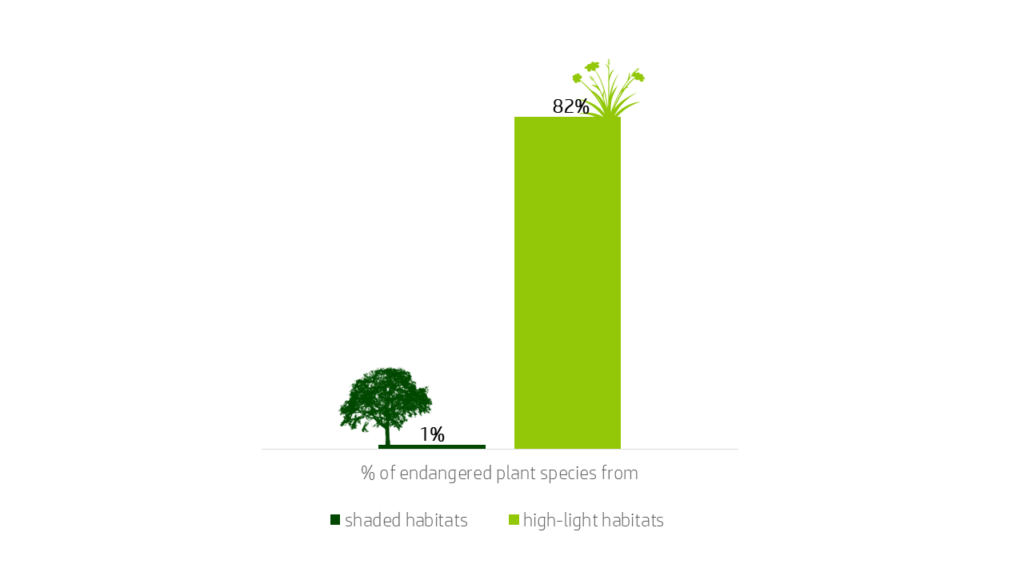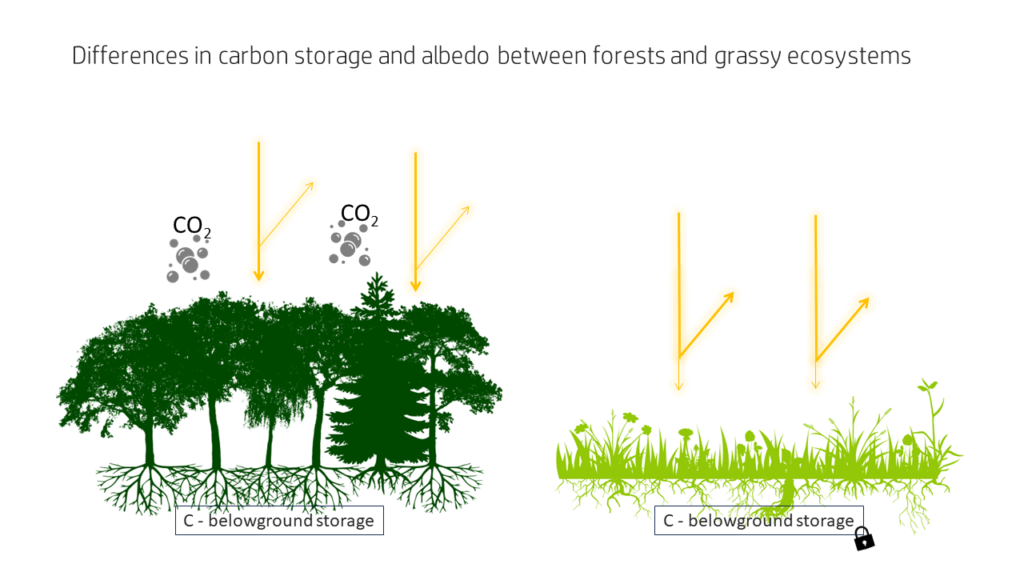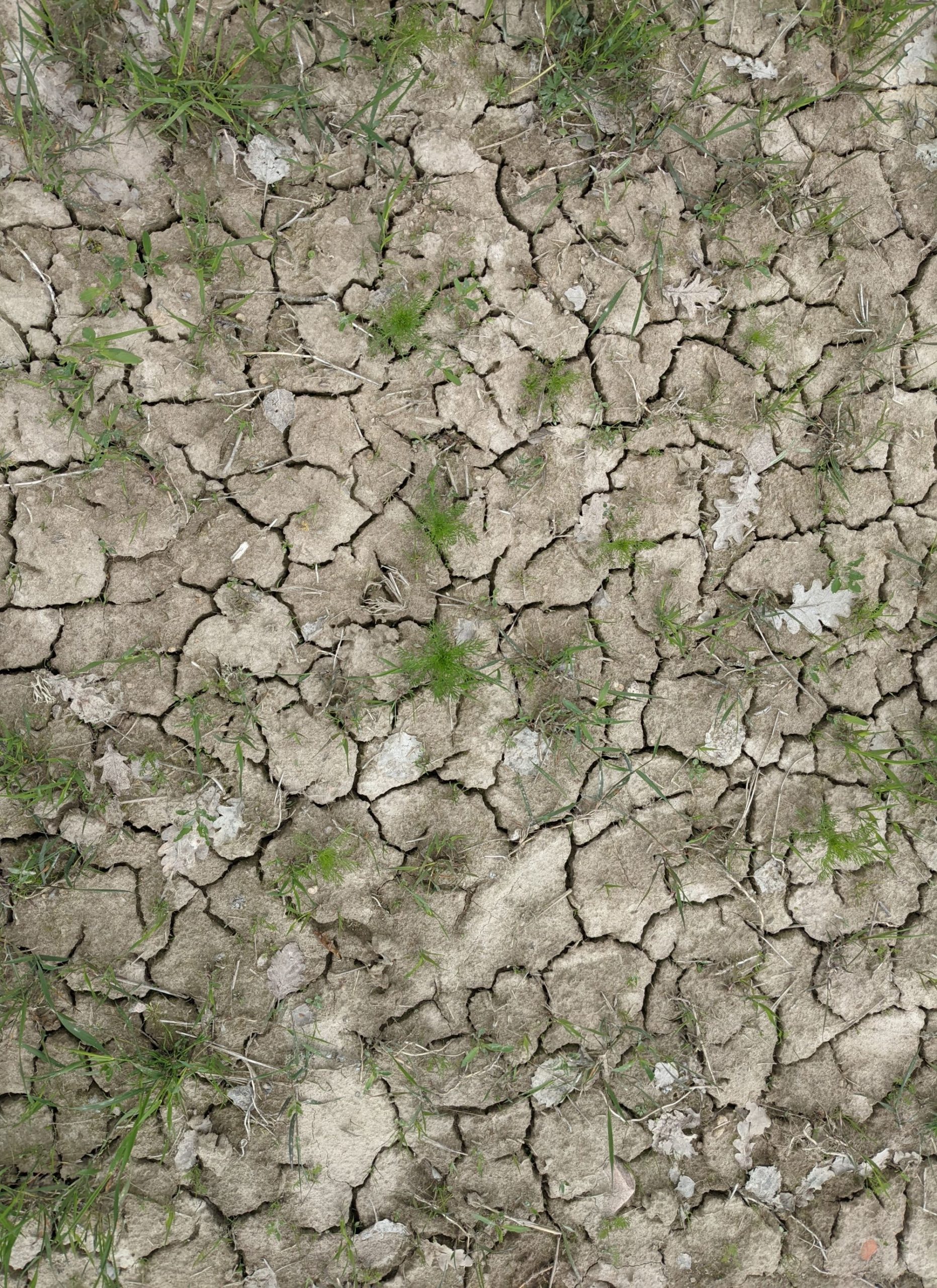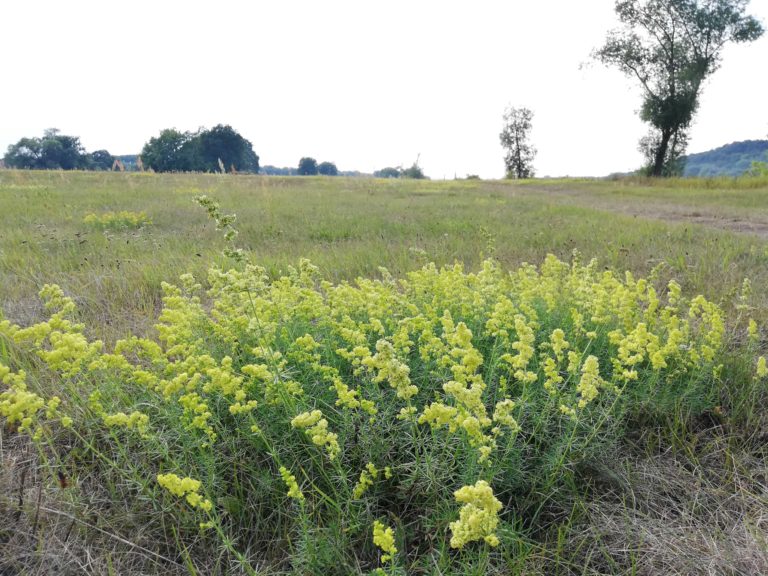What do you think of when it comes to biodiversity restoration? What does the best natural solution to fight biodiversity loss and mitigate climate change look like? Honestly, think about it for a moment, before you read on.
What came to your mind? Was there maybe some kind of picture of a beautiful forest wandering around your head? A lush green canopy of majestic trees, whose miraculous leaves use the sunlight to turn water and CO2 into carbohydrates through photosynthesis, sequestering carbon, and giving oxygen to the air in return? I can fully relate to that – probably most people can. Trees and forests can be great natural climate solutions and havens of biodiversity, offering a home for many species, so of course, they are very valuable ecosystems. But how does it come that we typically only think of forests here? Only about trees doing photosynthesis, when all plants are capable of doing that? Could it be that we are overlooking something? According to Staude and colleagues, the short answer is: Yes.
We could protect more than three-quarters of threatened plant species by shifting restoration priorities
Yes, we are overlooking something. Something which is actually much too big to overlook as the scientists Ingmar Staude and colleagues (2023), including Vicky Temperton and Emanuela Weidlich from the Institute of Ecology at Leuphana, found out: 82 % of all endangered plant species in Germany are found in high-light ecosystems such as grasslands, and only 1 % in shaded ecosystems such as forests (see figure below). And with this number it becomes very clear that there is a problem: While it is common agreement by now, that the restoration of ecosystems is crucial in our current time of increasing species loss and climate change, such restoration efforts are commonly equated with planting trees and restoring forests – not just by us, but also by policymakers. Yet when we look at the data from Germany (but also increasingly for other regions of the world) we find that the most threatened species are often from the open grassy habitats or biomes (Hoekstra et al. 2004, Jandt et al. 2022, Staude et al. 2023). Conservation, including restoration practice and policy, is globally often strongly focused on forests, mostly neglecting and underfunding or underprotecting open grassy ecosystems (grasslands, savannas, shrubland), although carbon-rich peatlands are now also starting to attract the attention they deserve as the habitat that can store by far the largest amount of carbon (peatlands cover around 3 % of the earth but can store more than double the amount of carbon than forests).

How do the scientists get these numbers?
For their analysis, Staude and colleagues combined overall vegetation data derived from the sPLOT database for plant data across Germany over time with Ellenberg indicator values. Ellenberg indicator values characterize species using different habitat parameters such as light availability, temperature, and nutrient content in the soil. This allowed them to then assess to what extent the species whose abundance has declined over the past century are associated with different habitat types (grasslands, forests, shrubland). The aim of this analysis was to examine how the threat status of the endangered plant species is related to their niches (the specific environmental factors that make up the species’ habitat) and how this developed. For this, the Ellenberg light values representing the light demand of plant species were chosen, as grassy ecosystems offer much light for their plants in contrast to forests which generally are shaded habitats. The resulting threat status for light demand was also compared to the threat status for nutrient demand, as high nutrient inputs mainly caused by agricultural intensification are known to be a primary driver of species loss.
This analysis showed the values mentioned in the beginning: 82 % of all red-listed plant species in Germany are light demanding, which is even more than the 61 % that need nutrient-poor habitats – while this nutrient problem is well known. Indeed, every second plant species of all plant species in Germany that require full light or nutrient-poor soils is endangered and the trend is increasing. Staude and colleagues argue that this is not just the case in Germany, but that these results are well transferable to other regions in Europe and beyond, which they underpin with a case study from southern Brazil coming to similar results.
A question of perspective
But why do we and policymakers then typically think of forest restoration when it comes to biodiversity conservation and restoration? Staude and colleagues assume and discuss two main reasons here.
Firstly, the prevailing conception of forests as the natural vegetation of central Europe leads people to favour this state of perceived wilderness over ecosystems like grasslands. Following this, grasslands would be degraded ecosystems. However, this theory is subject to a long-standing debate, with current evidence (Pearce et al. 2023) indicating that the historic landscape may rather had more diverse, mosaic-like vegetation structures with large components very open (somewhat like in wood pastures), as Staude and colleagues explain.
Secondly, biodiversity conservation and climate change mitigation are typically equated with carbon sequestration and as forests sequester large amounts of carbon aboveground they can be a very effective natural climate solution in this regard. Belowground they do not necessarily store more C than other habitats, however. Integrated measurement of belowground carbon stores and sequestration across habitats is rare however, and urgently needs addressing in integrated scientific studies to enable evidence-based recommendations for biodiversity and climate change actions on the ground. There is evidence that grasslands can store as much C belowground as forests, plus through their albedo effects and high resilience to extreme weather events, which will be both examined in more detail in the next section, they form a powerful tool to address the many pressures raining down on us within the climate change and biodiversity polycrises, as Staude et al. point out.
Both of these prevailing perceptions about forests result in much higher focus and investment in restoration efforts for these, according to the authors, while traditionally managed high nature-value grassland (with their vast biodiversity) have almost silently disappeared from our cultural landscapes, and with them an army of pollinators.
Grasslands against climate change?
In addition to this, Staude and colleagues argue that there are also good reasons to pay more attention to grasslands for climate mitigation and adaptation reasons, as indicated above. While grasslands cannot sequester as much carbon as forest aboveground, they also can store large amounts of carbon belowground. These carbon stocks are overall more resilient to extreme weather events, like fires and droughts, which are predicted to increase due to climate change. Hence, the sequestered carbon would be stored longer in such grassy ecosystems. Following Staude and colleagues, this is due to their long history and coevolution with high disturbance regimes such as frequent and regular fire, drought, and grazing. Forests, on the other hand, in some regions already face the risk of turning into carbon sources soon due to the extreme heat and drought stress trees are facing, leading to increased tree mortality. At the same time, the capability of grasslands to store carbon could be even increased by applying (and researching) the optimum grassland management to foster biodiversity as well as C sequestration and storage.
Nevertheless, more carbon sequestration is not immediately equal to more cooling. Therefore, Staude and colleagues also draw attention to other factors affecting global warming, such as the albedo of grasslands and forests. The albedo describes the capacity of a surface to reflect the sunrays shining on it. A bright surface reflects a lot of sunrays and stays cool, while a dark surface absorbs more sunrays and heats up (you can feel the difference when walking barefoot on a meadow and on a street on a sunny summer day, see diagram below). Consequently, a forest with its rather dark tree canopy absorbs more solar radiation than a grassland which is lighter, thus a forest area warms the local climate more than a grassland. Therefore, Staude and colleagues argue that grasslands could be powerful complementary players next to forests as natural climate solutions and deserve a lot more attention. At the same time, the paper makes abundantly clear that if we want to bend the biodiversity curve then we should focus strongly on restoring species-rich grasslands across Germany and many other temperate regions (maybe also outside of the temperate biomes).

All at once – Grassland restoration for biodiversity conservation, climate change mitigation and adaptation
Working towards biodiversity protection and climate change mitigation and adaptation at the same time, Staude and colleagues conclude that grasslands ought to be considered much more in restoration policies and have the potential to become linchpin solutions to both the biodiversity and the climate crises. Additionally, afforestation should not happen at the expense of valuable grasslands that harbour much biodiversity but also may be our best bet for keeping the C in the ground as the climate warms further. Also, they stress that they do not want to dismiss the value of forests when it comes to restoration: forests should be restored where they and their species are declining, however, they should not be in the focus of restoration efforts, when they are not. Additionally, a recent study by Mo et al. (2023) emphasises that we will be able to store more C by preserving existing forests (and allowing them to grow to maturity) than by planting a trillion trees in areas where forests are currently not found.
With all this in mind, perhaps the next time hearing the term restoration we may also think of a beautiful grassland with humming bees and butterflies visiting the great variety of its flowers.
If you want to dive deeper into this topic, you can find the paper of Staude and colleagues here: Staude, I. R., Segar, J., Temperton, V. M., Andrade, B. O., de Sá Dechoum, M., Weidlich, E. W., & Overbeck, G. E. (2023). Prioritize grassland restoration to bend the curve of biodiversity loss. Restoration Ecology, e13931. https://doi.org/10.1111/rec.13931
References
Hoekstra, J. M., Boucher, T. M., Ricketts, T. H., & Roberts, C. (2004). Confronting a biome crisis: global disparities of habitat loss and protection. Ecology letters, 8(1), 23-29. https://doi.org/10.1111/j.1461-0248.2004.00686.x
Jandt, U., Bruelheide, H., Jansen, F., Bonn, A., Grescho, V., Klenke, R. A., … & Wulf, M. (2022). More losses than gains during one century of plant biodiversity change in Germany. Nature, 611(7936), 512-518. https://doi.org/10.1038/s41586-022-05320-w
Mo, L., Zohner, C. M., Reich, P. B., Liang, J., De Miguel, S., Nabuurs, G. J., … & Ortiz-Malavasi, E. (2023). Integrated global assessment of the natural forest carbon potential. Nature, 1-10. https://doi.org/10.1038/s41586-023-06723-z
Pearce, E. A., Mazier, F., Normand, S., Fyfe, R., Andrieu, V., Bakels, C., … & Svenning, J. C. (2023). Substantial light woodland and open vegetation characterized the temperate forest biome before Homo sapiens. Science advances, 9(45), eadi9135. https://doi.org/10.1126/sciadv.adi9135
Staude, I. R., Segar, J., Temperton, V. M., Andrade, B. O., de Sá Dechoum, M., Weidlich, E. W., & Overbeck, G. E. (2023). Prioritize grassland restoration to bend the curve of biodiversity loss. Restoration Ecology, e13931. https://doi.org/10.1111/rec.13931



